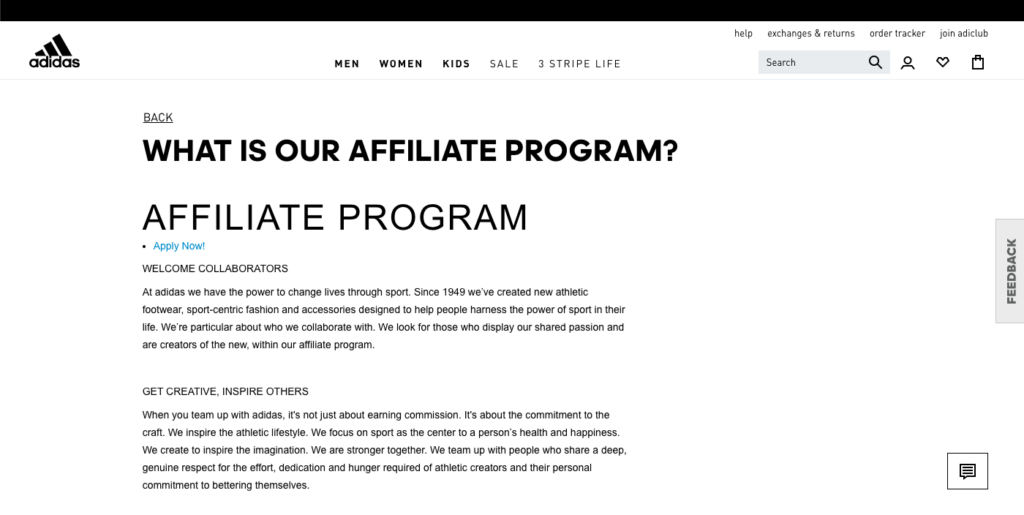The ins and outs of how – and why – you should set up a website to earn affiliate revenue
Publishers, both large and small, search for revenue opportunities outside of advertising. Over the past decade, Google, Facebook, and other intermediaries have taken up a larger share of revenue growth in the advertising industry, and even big publishers have felt the loss. While this appears to be bad news for smaller publishers and one-person publishing operations, such as bloggers who occupy a distinct niche, find it worse.
Challenges hinder paid advertising revenue growth. Consumers see anywhere from 4,000 to 10,000 ad messages daily, and 69 percent of audiences distrust advertising. In fact, consumer distaste for ads is so pervasive that 37.5 percent of global internet users use an ad blocker.
Brands notice the trend. According to a survey by OneScreen.ai, 67 percent of brand marketers saw digital advertising returns decline even after scaling up programs, with a further 97 percent searching for new channels.
As a publisher, this presents new opportunities to engage brands and generate revenue.
Enter the world of partnerships.
New revenue opportunities through partnerships
At its core, a partnership is when two companies work together to build a mutually beneficial relationship that promotes a product or service without feeling like old-fashioned advertising. Brands gravitate towards partnership marketing because of its valuable benefits, like increased customer awareness and brand retention.
Affiliate marketing offers anyone in the publisher space an excellent springboard to launch into partnerships.
As a performance-based marketing channel, affiliate marketing allows brands to reward publishers who drive traffic or sales to their website. Publisher partners don’t ship products or even make the final sale. They refer traffic to their partner brands and receive a commission for that traffic or conversion on the partner brand’s website.
The practice works for large and small publishers—from big newsrooms that pump out content hourly to solo writers who put up a few weekly posts. To start in affiliate marketing, you need to have (or build) a website, sign up for an affiliate program with a brand or an affiliate network, and then include customized affiliate links within your copy.
Why try affiliate marketing for your blog or website?
There are many reasons to monetize your content with affiliate links, but here are three of the most compelling:
- It’s easy to execute
- It works
- It requires little change to your content creation habits.
Affiliate marketing doesn’t require you to purchase, sell, or ship products, nor does it require customer service. Simply incorporate product promotions into your content, guiding customers to your partner companies.
Successful affiliate marketing generates additional revenue from conversions and commissions and doesn’t take extra work beyond your current publishing schedule.
Best of all, you can find and promote products that you already use or relate directly to your content. The challenge lies in recruiting paid advertisers whose products align with your interests. With affiliate marketing, you get to select the products to promote.
Even if you don’t have a website or a blog right now, it’s possible to get set up as an affiliate marketer in a matter of hours.
Why content creators should set up a blog or website
Even the most successful content creators benefit from an affiliate marketing blog or website.
A single website collects all of your work in one place, making it easier for your followers to connect with you across all your content creation channels.
A blog provides an easy way to create even more content and offers updates and ideas that may not necessarily fit into your primary channels. Blogs allow you to be more personal and give audiences a deeper look into what you do when not making and posting content. They also collect press coverage or embed videos you’ve done in collaboration with other creators.
Even if you don’t have the bandwidth to create new content, blogs can serve as an additional channel for repurposing existing assets. For example, suppose you produce a weekly podcast. In that case, you can embed each episode into a blog post with supplementary text that includes a transcription of the episode or expand on the topic of discussion.
A blog or website allows you to highlight the same brands and products you promote across your social media pages in a different place, increasing your reach and revenue potential even further.
Dedicated websites that collect your work also help with search rankings. People who search for you on Google rather than Instagram are more likely to find your website.
How to build an affiliate marketing website
Building an affiliate marketing website is easier than you might think. If you’re already operating a blog with a solid readership, becoming an affiliate publisher is even more manageable, and you can skip steps one and two below.
Step 1: Buy a domain
Think about what you want the website to cover when you start a website or blog. Are you going to write about gardening? Your experiences as a mom? Rock climbing? Are you an influencer looking for a web home for your work?
Use this core focus to come up with the website URL you want. It can be something as simple as NevadaGardening.com or DansRockClimbingBlog.com. If you’re an influencer, you might want to buy a URL of your first and last name.
Hosting sites like Hostinger and Squarespace make it easy to find available URLs and purchase them within minutes.
Step 2: Build the site
Building a site can be a cinch if you’re using a hosting service. Services like Squarespace make it easy to create a site with what-you-see-is-what-you-get site editing tools. For something even faster, build the site around WordPress, which allows you to get up and running with a simple blog format. WordPress offers free, open-source software—according to WordPress.org, 43 percent of the web uses the software.
This dashboard will be the control center for how you publish content and add your affiliate links, so spend some time getting used to the controls. Publish a few posts to get a sense of your voice and have some existing content on your site. Building up this content will help develop the loyal following vital for success.
The affiliate publishing space is competitive. Small self-published blogs and multi-billion dollar media companies churn out content with affiliate links. Even though the two entities feel different, they compete to drive traffic to their partners.
Bloggers only succeed when they build a loyal following. The easiest way to do that is to build up content in a consistent voice. Publish consistently and authentically. That way, your audience will trust your opinions.
Step 3: Find and join affiliate programs
You might be asking yourself, “wait, already?” Yes, building an affiliate marketing website takes just a few easy steps. Once you have a site up and running, search for affiliate programs to join and start creating affiliate links. Two main ways exist to help you do this.
Contact a trusted brand directly
If you want to hunt down programs for specific brands you like, run an internet search for the brand name and “affiliate program” to see if they have an active program.
For example, if you search for “Adidas affiliate program,” the help page appears as the top search result. The page explains the program, outlines some of the brands’ affiliate standards and criteria, and includes a link to apply.

Most consumer-facing brands use an affiliate program, but this doesn’t mean everyone who applies automatically gets in. It helps to include a track record of publishing content and content that aligns with the audience the brand wants to reach.
Join a larger affiliate program
Larger affiliate programs remain the other primary way to start getting affiliate links. Two of the most popular include Amazon Associates and impact.com.
Amazon Associates offers an affiliate program where bloggers promote Amazon products. Affiliate marketers sign up, search on Amazon’s site for products they want to promote, and then grab a custom affiliate link for that product to add to their website. Given Amazon’s massive share of ecommerce, it’s not that this remains the most prominent affiliate program.
Unfortunately, many affiliate publishers use Amazon exclusively, missing the opportunity to cast a wider net and see which affiliate programs offer better rates.
Despite its popularity, Amazon’s affiliate program doesn’t always pay the highest commissions. The ecommerce giant lowered its rates at the height of the COVID-19 pandemic in 2020. Even though rates rose temporarily in April 2022, they remain lower than pre-pandemic rates.
Amazon pays different rates depending on the product category. For example, Amazon offered a 5 percent commission rate for home and home improvement products in April 2022, while health and personal care products pay a 2 percent commission rate.
| Amazon.com Promotional Commission Rates | ||
| Product Category | Old Rate | New Rate |
| Shoes, Handbags & Accessories | 4% | 6% |
| Office Products | 4% | 6% |
| Kitchen | 4.5% | 5.5% |
| Home | 3% | 5% |
| Home Improvement | 3% | 5% |
| Beauty | 3% | 5% |
| Business & Industrial Supplies | 3% | 5% |
| Health & Personal Care | 1% | 2% |
Amazon commission rates, as of April 13, 2022, reported by Search Engine Journal.
Many alternative affiliate programs to Amazon exist, and they’re just as easy to set up and get started. Other programs may even have better rates, terms and conditions, service, and responsiveness.
Other options, like impact.com, connect affiliates to brands that offer higher commissions. The company manages affiliate programs on behalf of thousands of brands. By joining the impact.com Marketplace, bloggers connect directly with top brands that match their readers’ preferences.
Step 4: Add affiliate links to your content
Once you’ve joined an affiliate program or programs, it’s time to promote products! Your brand partners will provide customized affiliate links, which you insert into your website copy. These links track how much traffic you refer to the brand’s website.
Most programs allow you to search through a list of products and copy a custom link. You can then use this link in any content you publish.
How to earn a profit on your website
Building a website and adding affiliate links is relatively easy, but these steps don’t translate into instant profit. Even experienced content creators just getting into affiliate marketing require some help to optimize the revenue opportunity.
Implement these few steps to generate even more revenue.
1. Build a following with consistent content
The fastest way to drive more affiliate marketing revenue is to drive more traffic to your affiliate partners. This means you need more visitors to your site, so consistently post content that keeps your audience coming back and attracts new readers.
Steady, reliable content output is a key differentiator. Affiliate programs won’t take notice of a blog that doesn’t publish regularly, and neither will readers.
Map out a content strategy and create an editorial calendar so you’ll continue posting regularly. Develop a clear voice and respond to your audience’s interests. Craft high-quality content that follows the six “STEPPS” of virality to appeal to brands. Additionally, ensure your content gets in front of the right people by creating a robust content amplification strategy.
2. Earn trust through authenticity
A clear voice that remains on topic earns the trust of loyal readers. Brands invest in affiliate publishing because they know that trust is imperative, and it’s in short supply when it comes to marketing and advertising right now.
Research from Forrester Consulting shows that individuals have less faith in institutions than ever before. Traditional advertising isn’t a trusted source of information anymore.
But consumers do trust people, publishers, and other brands.
That trust extends to blog content, especially content with a consistent, authentic voice.
If you earn your audience’s trust and talk about a brand to consumers, the brand becomes part of that mutually beneficial relationship. This becomes a circle in which all three participants provide each other with trust and value. Brands want to leverage this trust, and it’s a large part of what makes affiliate partnerships appealing.
3. Identify items that have higher payouts
If you drive a steady amount of traffic to your partners but remain unhappy with the amount made on commissions, then dedicate more time selecting the products you promote on your site.
You’ll receive lower commissions if you only promote lower-priced products. Higher-priced items earn you more right off the bat due to higher commission rates. Spend extra time looking at the rates and product availability the next time you grab an affiliate link.
With that said, don’t sacrifice your authenticity. Avoid promoting a product simply because it fetches a higher commission. Highlighting brands that don’t align with your niche or that you don’t honestly believe in diminishes the precious trust you’ve built with your audience.
4. Find higher-paying affiliate partners
The next step is finding affiliate programs with larger commissions. Affiliate networks are beneficial for identifying these kinds of programs. Selecting brands one by one is a time-intensive task that could be better spent finding and promoting higher-paying products.
Join a program like impact.com to sift through the many partners on its platform. These platforms allow you to search through thousands of brands to find products that relate to your blog, your interests, and those with the best payout rates. Finding the right brand partners that naturally fit into your content will maintain the authenticity of your content and optimize commission earnings.
About impact.com’s Marketplace
Interested in learning more about how to get started in affiliate publishing or build out your program to maximize revenue? Join the impact.com Marketplace—a part of the impact.com for Publishers suite—to help monetize your content seamlessly.
The Marketplace allows you to connect with top brands that match your readers’ and viewers’ preferences, creating a seamless blend between the content and the products you promote. A suite of automation tools allows you to own your partnerships and continue building deeper relationships with brands and your audience.





